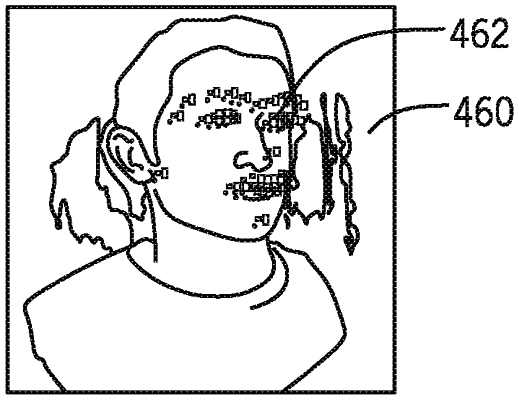| CPC G06T 13/40 (2013.01) [G06T 7/50 (2017.01); G06T 17/20 (2013.01); G06V 40/172 (2022.01); G06T 2207/30201 (2013.01)] | 19 Claims |

|
1. A method to generate avatars representative of a user and a character design language, comprising:
analyzing one or more images of a user to determine user characteristics, wherein the user characteristics comprise depth information and color information from a user face;
determining measurements for a plurality of facial features of the user face based on at least a portion of the user characteristics, comprising:
generating a user mesh based on the user depth information;
wrapping the user mesh with a generic mesh to generate a wrapped mesh, wherein the wrapping is based on an alignment of one or more facial landmarks of the user mesh with one or more generic facial landmarks of the generic mesh, wherein the one or more landmarks of the user mesh are determined by the user landmark information; and
subtracting the generic mesh from the wrapped mesh to output an avatar mesh, wherein the avatar mesh corresponds to the avatar facial shape to be used for the avatar;
classifying a first facial feature of the plurality of facial features relative to a first class of avatar facial features corresponding to the character design language based on the measurements of the first facial features and the color information;
selecting a first avatar facial feature from the first class of avatar facial features based on the classification;
classifying a second facial feature of the plurality of facial features relative to a second class of avatar facial features corresponding to the character design language based on the measurements of the second facial features and the color information;
selecting a second avatar facial feature from the second class of avatar facial features based on the classification; and
generating an avatar representative of the user and the character design language by applying the first avatar facial feature and the second avatar facial feature to an avatar.
|